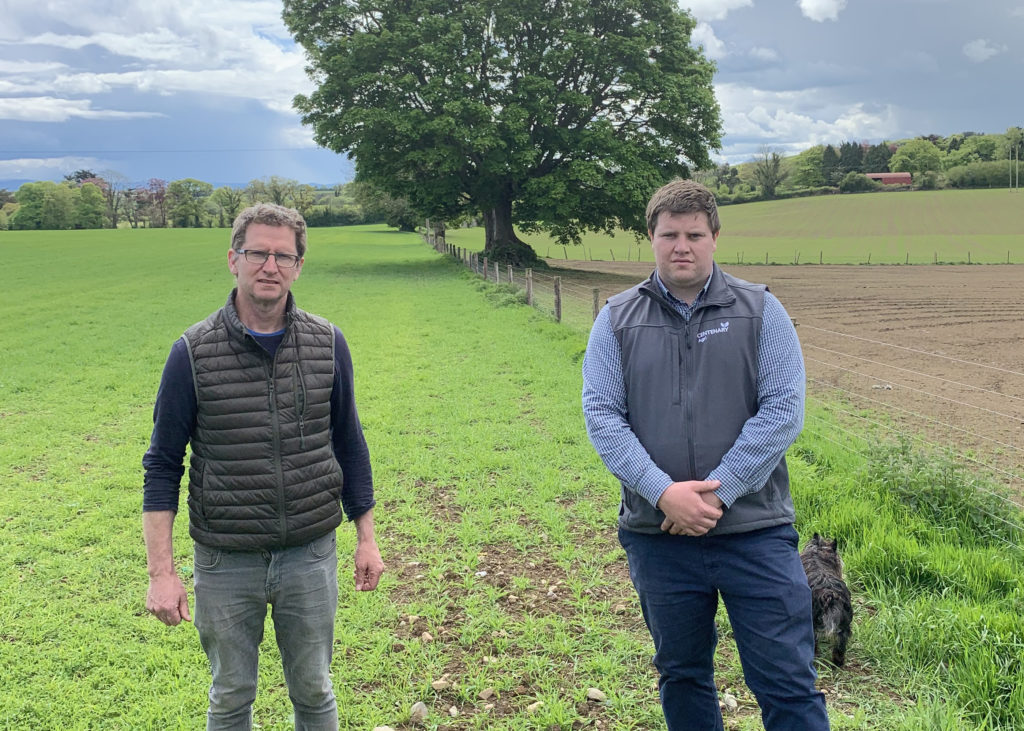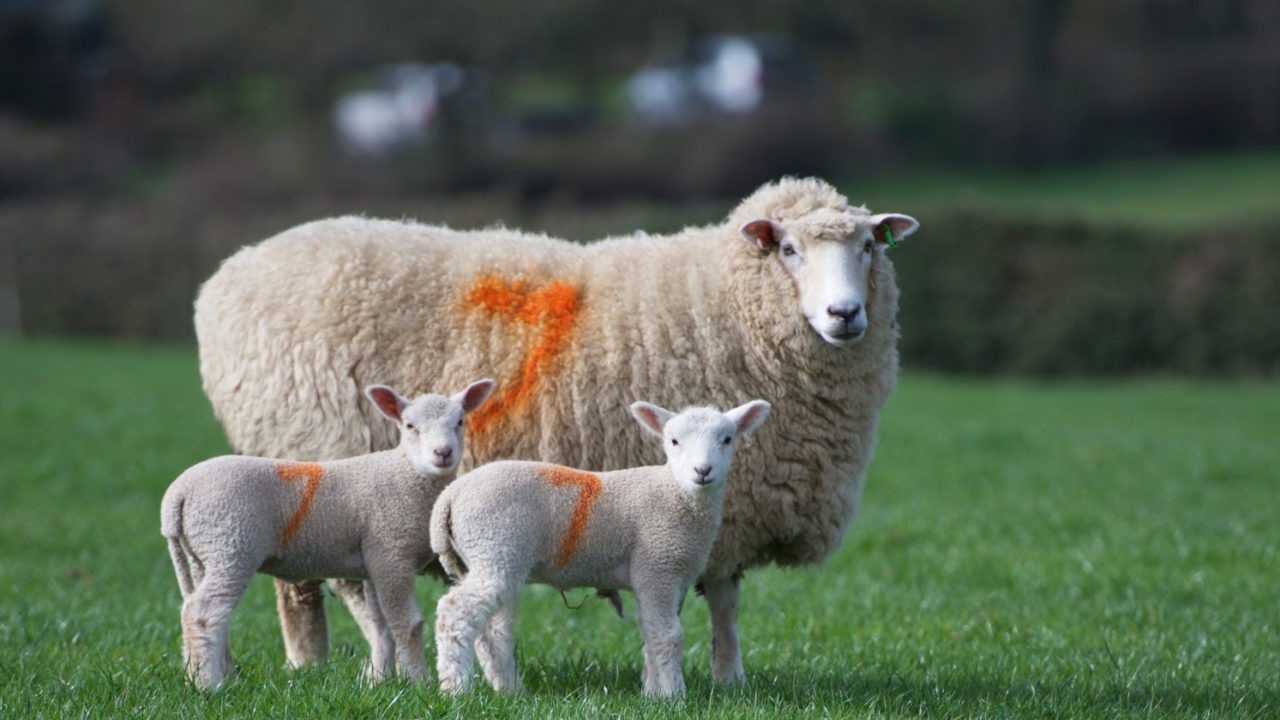With nutritional requirements doubling in the last six weeks before lambing, the importance of feeding and management during this period can’t be overstated.
With a rapidly growing foetus and increased demand for colostrum production, combined with reduced rumen capacity and lower intakes, it is especially crucial that ewes’ needs are met to avoid metabolic issues and ensure the quality and quantity of milk and colostrum.
Two prominent sheep farmers in Co. Tipperary share their stories of how a specialist concentrate based on high-quality raw materials has helped increase colostrum quality and quantity, as well as lifting the volume of milk that ewes provide, all contributing to increased lamb vitality and vigour.
Targeted nutrition results in improved milk supply
Robert Power runs a mixed farm with his wife Grainne, and their sheep enterprise comprises a March-lambing flock of Belclare and Suffolk crosses.
The ram is introduced to the ewes in mid-October, with scanning then taking place 80 days later, with scanning rates standing at an average of 1.8 lambs per ewe.
“Scanning usually takes place just after Christmas and we then bring the ewes indoors, separating those carrying twins and triplets,” Robert said.
“Two months out from lambing, we start to increase the ewe’s concentrate intakes, relative to the number of lambs they are carrying. During the pre-lambing period, we feed a high DMD haylage alongside concentrate, and this has worked really well.
“The aim is to have lambs finished and off the farm from September onwards. With most lambs being finished on grass, with no concentrate supplementation; it is vital that they are getting plenty of milk from their mothers to help support good growth rates and performance.”
High-quality nutrition

With this requirement in mind, Robert asked for some advice from Howard Stanley, nutritionist at Centenary Feed and Grain Ltd., prior to the 2021 lambing season.
“The lambing and post-lambing period puts a lot of demand on the ewe’s energy reserves,” explained Howard.
“If ewes are going to produce a good volume of high-quality milk for their offspring, they need to be provided with specific nutritional support themselves.
“Grass alone is unlikely to provide them with all the energy needed, and this is especially problematic if they are supporting triplets.”
Howard therefore recommended to Robert that he start feeding the 19% Maxisaf Ewe and Lamb Cubes to support ewe performance.
“The feed provides 19% crude protein, largely through soya, but also contains 1.5kg of Actisaf live yeast and 1.5 kg of Safmannan premium yeast fraction per tonne of feed.
“The protein aims to support colostrum and milk production, while Actisaf helps improve rumen function and feed digestibility,” he added.
“Safmannan is also included to support the colostrum quality of the ewes, which subsequently ensures a good transfer of immunity to the lambs. This is critical for good health and performance in young lambs, at a time when they are most susceptible to disease.”
Improved feed intakes and high digestibility
Having successfully introduced the new feed to his ewes, Robert has been very pleased with the results so far, with none of his ewes showing a shortage of milk during the post-lambing period.
“I have noticed a marked improvement in the ewe’s feed intakes and improved feed digestibility, which has helped support strong milk yields,” Robert explained.
“As a result, the lambs have performed really well and got off to a great start. Even triplets required minimal intervention as their mothers were giving them plenty of milk.
“The lambs that the ewes produced have been full of vigour and we have had very few health issues.
“As someone who takes a very targeted approach to antibiotic usage and wants to minimise their use on farm, this is very good news, and it is great to see the lambs looking so healthy,” he added.
Lamb growth and performance

John Large has a flock of 650 ewes consisting of Belclare, Texel, Suffolk, Charolais and Vindeen crosses, with the whole flock fully e-IDed and part of the monitor farm network established by Sheep Ireland.
After diagnosing bacterial joint infections in several of his lambs and noticing a general decline in lamb vigour, he started investigating possible reasons for this drop-off in lamb performance.
“I had been unhappy with lamb performance prior to 2021, but knew that something definitely had to change when some of my lambs were diagnosed with joint ill,” John explained.
“There were clearly some issues regarding lamb immunity levels and overall health, and the vet felt this could be due to my ewes not providing enough milk or not enough good quality colostrum.”
He decided to make some changes to his feeding protocol and asked Howard Stanley of Centenary Feed and Grain Ltd. for some advice before the 2021 lambing season.
Howard suggested that John feed 19% Maxisaf Ewe and Lamb Cubes during the pre-lambing period.
“With a 19% protein content, comprising a mix of high-quality cereals and 21% soya bean meal, this concentrate feed boosts the amount of colostrum a ewe produces, as well as overall ewe performance and milk production,” Howard explained.
“But as well as quality protein content, each tonne of feed also contains 1.5kg of Actisaf live yeast and 1.5kg of Safmannan.
Actisaf helps aid rumen function and feed digestibility to help increase milk yields, while Safmannan supports the health performance of young lambs by improving colostrum quality, which aids in the transfer of immunity from ewe to lamb. The aim was to provide a single feed that results in a number of benefits to the ewes and their offspring.”
Higher volumes of milk production with high-quality feed
The results of introducing the new feed have been excellent, with John reporting higher volumes of milk production in ewes, better quality colostrum and healthier lambs, with strong growth rates.
“The mix of high-quality protein, Actisaf and Safmannan in the feed has supported the production of high volumes of milk and quality colostrum,” John explained.
“This in turn has boosted lamb performance, and I enjoyed this year’s lambing season as we had so few health issues.
“I usually have to buy in powdered colostrum to supplement the lambs’ intakes, but I haven’t had to since introducing the 19% Maxisaf Ewe and Lamb Cubes.
“The lambs are displaying much more vigour, there have been fewer health issues and I think I could have sold milk from the ewes, there was so much of it!
“The all-round performance of the flock has vastly improved, with average birth weights for single lambs now at 6kg, twins at 5.2kg and triplets at 4.7kg. Growth rates were also very strong, working out at an average of 320g per lamb, per day by 40 days of age.
“We know how important it is to get lambs off to a good start in life and I think the Maxisaf is playing a big part in helping us achieve that,” he concluded.
For more information about Actisaf and Safmannan and how to include it in your ewes’ diets, visit www.yeastsolutions.co.uk/sheep or call 061 708 099 (ROI) / 028 9334 3900 (UK).

